When you have a peanut allergy, a warning on a food label could potentially save your life. If you are lactose intolerant, you will be thankful when your food labels let you know upfront that the product contains lactose. Sometimes, however, information on packaging is less about informing you, and more about selling products. Phrases like ‘chock full of antioxidants’ or ‘gluten-free’ seem important because over and over we are being told to pay attention to these words. In this article, We will discuss one of these phrases: gluten-free.
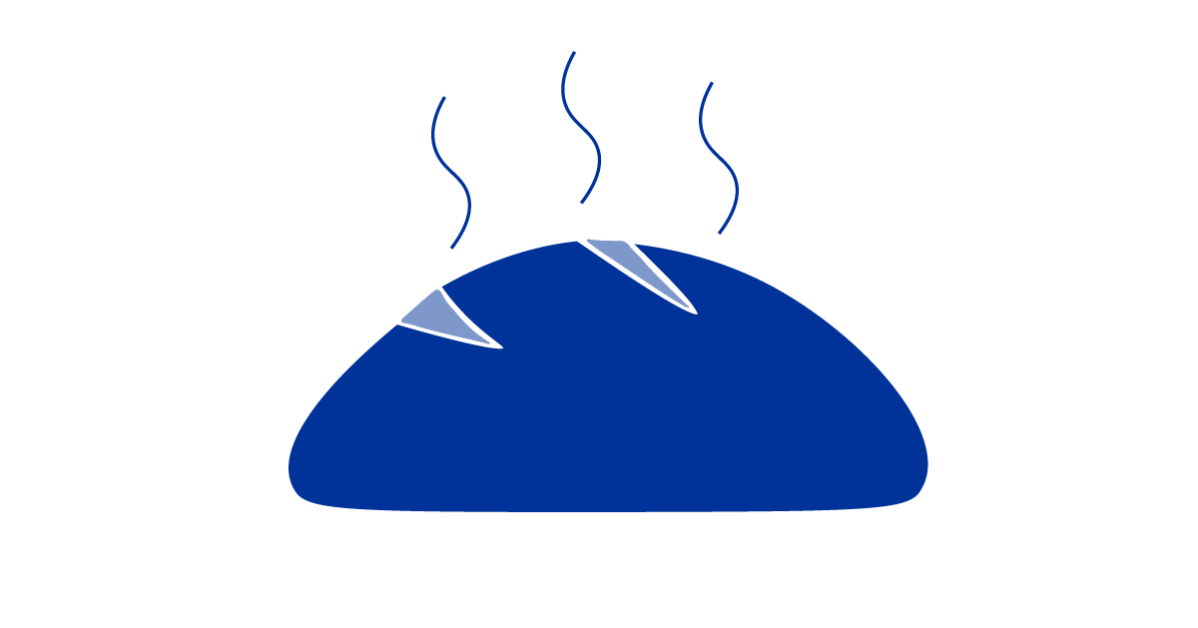
Gluten-free seems to be one of those undefined labels that most people have come to associate with food being healthy. But are gluten-free products healthier than their regular counterparts? Is there another reason to buy gluten-free food? To answer these questions and more, we first need to figure out what is gluten?
Proteins
Food is mainly made up of water, carbohydrates, lipids, proteins and micro-nutrients. Gluten, in short, falls into the protein category. In food, there are a lot of naturally occurring proteins with fancy names. In milk, there are, for instance, casein proteins and whey proteins[1]Thompson, Abby, Mike Boland, and Harjinder Singh. Milk Proteins. Amsterdam: Academic Press/Elsevier, 2009. Print. and in a piece of chicken myosin and sarcoplasmic proteins can be found.[2]Zayas, Joseph F. Functionality Of Proteins In Food. New York: Springer, 1997.
Gluten
So what kind of protein is Gluten? Gluten is a protein that naturally occurs in several types of grain. More accurately, gluten is a mixture of two types of protein: glutenin and gliadin. Glutenins are very long protein molecules, and gliadins are relatively short protein molecules. Because of their differences in shape and size, they both have a distinct function within the protein mix called gluten.[3]Edwards, W. P. The Science Of Bakery Products. Cambridge: Royal Society of Chemistry, 2007. Print.
Glutenin and Gliadin
Not all gluten-containing foods have the same ratio of glutenins to gliadins. If everyone who reads this article would buy 100 grams of wheat, analyse the composition and share the results, we would find a lot of differences. The soil in South America is different from the soil in India or Canada. The same goes for the weather conditions. While farmers are growing their grain, it absorbs molecules from its environment. Every environment has small or big differences that can influence the final composition of the grain that grows there. It is just like with humans, sort of.
You are what you Eat
When your diet is mainly made up out of rice, vegetables, and fish, you drink water or tea, and you walk 5 kilometres every day, your body will reflect that. It uses the molecules that you introduce into your system. When your diet is made up out of fries and pork, and you only walk 1 kilometre every day, your body absorbs a different ratio of nutrients. Even how much sun you are exposed to while you walk, the air you breathe and the water you drink influence your body. And that is just the environment you live in, we haven’t even considered the differences in DNA.
Protein Ratio
To get back to our proteins. The environment is not solely responsible for the protein ratio. There are, for instance, many different species of grain (like rye or spelt) that all have a different ratio of glutenins versus gliadins. Some do not even contain any glutenins and gliadins. Food scientists have been analysing the ratio between glutenins and gliadins for many years. During those studies, they discovered that this ratio greatly influences the quality and structure of bread and other grain products. But how does this work?
What does Gluten do in our Food?
Aside from providing a part of our daily protein intake, gluten plays another role. This is where a bit of food science comes in.
Gluten molecules can provide food with a specific structure. When we bake bread, we want the dough to rise, stretch out and trap air bubbles inside it so that it feels nice and fluffy in our mouths. That means that we need it to be able to extend and stretch.
Glutenins
Glutenins are long and can link to each other and water. This capacity is necessary to create a firm structure within the dough. When the dough is too weak, all the air bubbles will escape from the dough, and it will collapse.
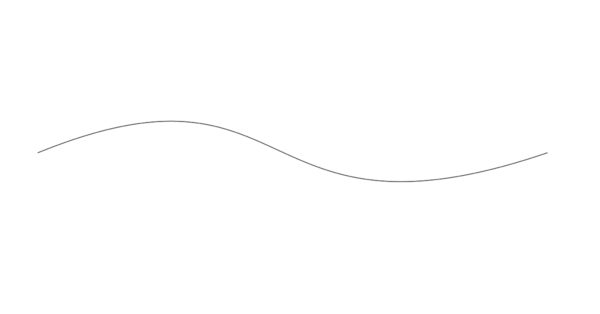
Gliadins
On the other hand, we do not want a loaf of bread that is very tough and hard. It has to be able to move. Gliadins make this movement possible due to their shape and interactions with the glutenins.

Gluten Network
The gliadins and glutenins in the dough are all tangled up and arranged in an unstructured manner. In that state, it will not be able to capture and hold on to a lot of air bubbles (see the image below).
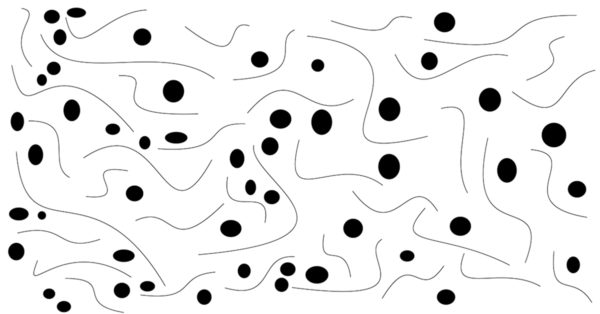
Upon kneading the dough, the long molecules stretch and rearrange how they are positioned. In the schematic representations below, you can see that it is easier for the network to move after the rearrangement. If you could grab onto the left side and the right side of the rearranged network, it would move like an accordion. The gliadin molecules are like beads in between the glutenin molecules and make sure the structure has the freedom to move.[4]Edwards, W. P. The Science Of Bakery Products. Cambridge: Royal Society of Chemistry, 2007. Print.
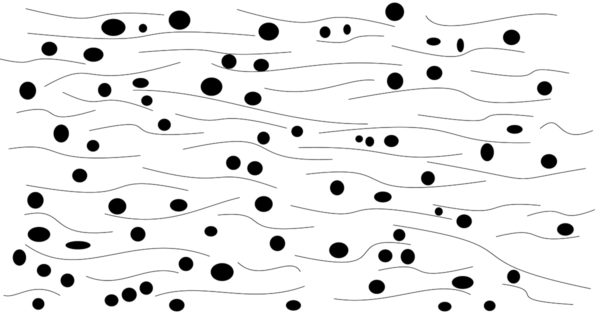
The new network allows glutenin molecules to link together and form even longer and strong molecules. The smaller gliadin molecules can move alongside the longer chains, allowing for movement within the otherwise rigid structure. At this point, the network is firm but it can also capture gas bubbles. The dough is capable of rising because it is flexible enough to move around but rigid enough to stay up.[5]Yada, R. Y. Proteins In Food Processing. Boca Raton: CRC Press, 2004.
Does Gluten influence my Health?
To answer that question, we first need to define what the question even means. For some people, the question means ‘Will I lose weight if I stop eating gluten?’. Other people might be wondering ‘Do I get sick when I eat gluten-containing products?‘. Just to make sure, let’s answer both.
Will I Lose Weight if I Stop Eating Gluten?
Energy Intake
When you look at what makes your body lose or gain weight, we find that it is not a simple question to answer. Generally speaking though, it depends on the amount of energy you consume versus the amount of energy you use. (Read our article on [Healthy Food Choices] for more information) You can, for instance, consume carbohydrates (roughly 400 kcal/100g), proteins (roughly 400 kcal/100g) or lipids (roughly 900 kcal/100g).[6]McArdle, William D, Frank I Katch, and Victor L Katch. Exercise Physiology. Baltimore, MD: Lippincott Williams & Wilkins, 2010.[7]Dunford, Marie, and J. Andrew Doyle. Nutrition For Sport And Exercise. Belmont, CA: Thomson Wadsworth, 2008. The combination of these macronutrients in your food adds up to the total amount of energy you consume. So to determine how many kilocalories you get from gluten-containing products, you need to look at all the nutrients.
Gluten in food
For instance, let’s say that we are interested in what gluten protein brings to the table in products like bread or pasta.
When you look at the nutritional label for bread, you see that about 7% of the entire caloric content of bread comes from proteins. Additionally, about 50% comes from carbohydrates. (See label below.)
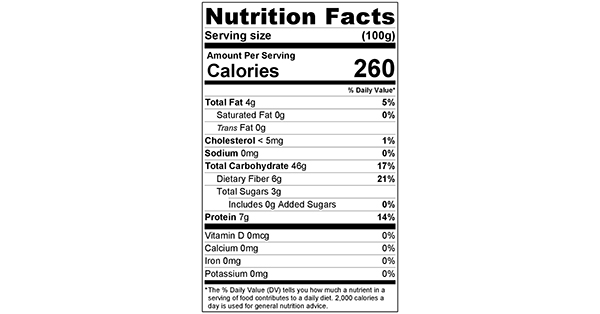
And let’s look at pasta. Roughly 15% of the entire caloric content comes from protein while about 70% comes from carbohydrates. (See label below.)
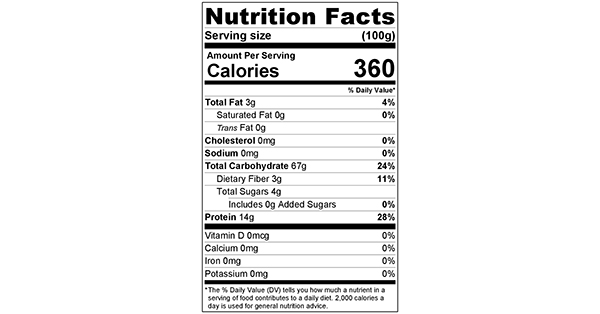
We know that both protein and carbohydrate provide us with about 400 kcal/100g, but we can see that most of the energy we get from these gluten-containing products, comes from carbohydrates. On top of that, not all the protein in these products are glutenin or gliadin (gluten).
Rumour has it …
So where does the rumour come from that gluten-intake is associated with weight? Well, most products that contain gluten, like pasta, bread, and granola, are products with a very high carbohydrate content. When you remove these products from your diet or eat less of them, you will likely consume fewer calories. This, of course, is not the case if you replace pasta with rice or switch to gluten-free bread. As long as you do not make drastic changes to the amount of energy you are consuming, nor change the amount of energy you use during the day, switching to a gluten-free diet will not make a big difference when it comes to your weight.[8]Dunford, Marie, and J. Andrew Doyle. Nutrition For Sport And Exercise. Belmont, CA: Thomson Wadsworth, 2008.[9]McArdle, William D, Frank I Katch, and Victor L Katch. Exercise Physiology. Baltimore, MD: Lippincott Williams & Wilkins, 2010.
Side Note
As a side note: your body metabolizes food in a somewhat complicated manner. This means that the simplified explanation above should be taken as such; simplified. It is meant to make you realize that when it comes to weight gain due to food intake, it is a good idea to first look at your all-over caloric intake and what type of foods those calories come from. Learn more about the nutrients in your food. Know what you eat.
Do I get sick when I eat gluten-containing products?
For a few people, the answer to this question is yes. There are several types of gluten-related negative responses someone can have and we will discuss a few so you can get a better understanding of them.
Celiac Disease
The most severe reaction to gluten is called celiac disease. Celiac disease is an immune-mediated disorder and has a prevalence of about 1%.[10]Parzanese, I., Qehajaj, D., Patrinicola, F., Aralica, M., Chiriva-Internati, M., Stifter, S., … Grizzi, F. (2017). Celiac disease: From pathophysiology to treatment. World Journal of Gastrointestinal Pathophysiology, 8(2), 27–38. http://doi.org/10.4291/wjgp.v8.i2.27
When someone with celiac disease eats gluten, their body detects this and sees the molecules as a threat. It will start to defend itself but ends up destroying the lining of the small intestine. This means that when someone has celiac disease, they will not just have an abnormal immune response to gluten, but they will also suffer from male nutrition because their body cannot absorb nutrients and minerals in the way that it should. Symptoms can be abdominal pain, vomiting, weight loss, constipation or chronic diarrhoea.[11]Ekvall, S., & Ekvall, V. K. (2017). Pediatric and adult nutrition in chronic diseases, developmental disabilities, and hereditary metabolic disorders: prevention, assessment and treatment. Oxford: Oxford University Press.[12]Teichroew, J. K. (2017). Chronic diseases: an encyclopedia of causes, effects, and treatments (Vol. 2). Santa Barbara, CA: Greenwood.
Wheat Allergy
The second gluten-related negative reaction someone can have is a wheat allergy. When you have a wheat allergy, you have an allergy. That means that antibodies get involved because your immune system sends out alarm signals saying a dangerous substance is in contact with your body. This can either be because you are eating certain proteins or because you are touching them. Reactions like swelling, redness, pain, etc. are common for people with a wheat allergy. For people with a wheat allergy, though, a wide variety of molecules found in wheat can activate a different part of the immune system than the part that gets activated in people with Celiac Disease.[13]Anca, Alexandra et al. The Total Food Allergy Health And Diet Guide. Print.
Non-Celiac Gluten Sensitivity
Another issue that may occur after someone eats gluten is Non-Celiac Gluten Sensitivity (NCGS) which causes both symptoms in the intestines as well as extra-intestinal. These symptoms are not the same for everyone diagnosed with NCGS, and the intensity of the symptoms can vary. Many aspects of what exactly happens when people show symptoms after consuming gluten are still not clear. Patients can show symptoms hours to days after consuming gluten. The symptoms only stop when their gluten consumption stops.[14]Catassi, Carlo et al. ‘Non-Celiac Gluten Sensitivity: The New Frontier Of Gluten-Related Disorders’. Nutrients 5.10 (2013): 3839-3853. Web. 23 Feb. 2015.
Over the last few decades, a lot of research has been done on the correlation between gluten intake and symptoms associated with NCGS. The condition is a very complex topic because NCGS appears to overlap with for instance Irritable Bowel Syndrome (IBS) and Autism Spectrum Disorders (ASD). In many cases, patients with IBS or ASD show a positive response to a gluten-free diet. (Please be aware that a gluten-rich diet does NOT cause IBS or ASD.[15]Catassi, Carlo et al. ‘Non-Celiac Gluten Sensitivity: The New Frontier Of Gluten-Related Disorders’. Nutrients 5.10 (2013): 3839-3853. Web. 23 Feb. 2015.
What Contains Gluten?
Now we know what gluten is and we know a bit more about associated health issues, it is also useful to know where we can find gluten.
Food
Unless specifically mentioned, all products made with these [grains and yeast] will contain gluten. This, however, does not mean that all other products do not contain any gluten. Some companies produce more than one product. They produce a wide variety of things using some ingredients that contain gluten, and some that don’t. If producers want to make gluten-free products in a facility where gluten-containing ingredients are used, they need to keep the production lines strictly separated. If the ingredients are not kept apart, cross-contamination can happen. When a nutrition label says ‘may contain traces of …’, it is probably listed because there is a risk of cross-contamination.
So when you are eating gluten-free dark chocolate, it only differs from regular dark chocolate because it was made strictly separated from the presence of gluten-containing products. All dark chocolate ingredients are naturally gluten-free and thus the caloric value for both types of chocolate is similar.[16]Anca, Alexandra et al. The Total Food Allergy Health And Diet Guide. Print.
Other Products
The use of gluten is not limited to food and can be found in a wide variety of products. You can, for instance, find them in food additives, supplements, beverages, or pharmaceuticals and cosmetics. They can even be found in things like play dough or sacramental bread. So, if you or someone close to you has severe reactions to gluten, make sure you always check if products that might be ingested are gluten-free. Always check the label, it will only take a second.
Are you (still) worried?
If you think that you might have a physical reaction to gluten, that is influencing your wellbeing, just talk to your doctor. (S)he can help you figure out what is going on in an efficient manner. If you would like to read more about either Celiac Disease, wheat allergy or Non-Celiac Gluten Sensitivity, we recommend you check out the references used for this article. You can also look around online. When you look for information online, always make sure that websites have references you can check. Pages created by governments to inform you are usually a reliable source of information.[17]Anca, Alexandra et al. The Total Food Allergy Health And Diet Guide. Print.[18]Catassi, Carlo et al. ‘Non-Celiac Gluten Sensitivity: The New Frontier Of Gluten-Related Disorders’. Nutrients 5.10 (2013): 3839-3853. Web. 23 Feb. 2015.
Did you enjoy this article? Check out our article [What contains Gluten?] and read more about where you can find gluten. You can also Follow Truthful Science on social media so you won’t miss out on anything new! Do you have any questions or comments? Leave a comment below, and contact me via social media on LinkedIn or Instagram.
References
Leave a Reply